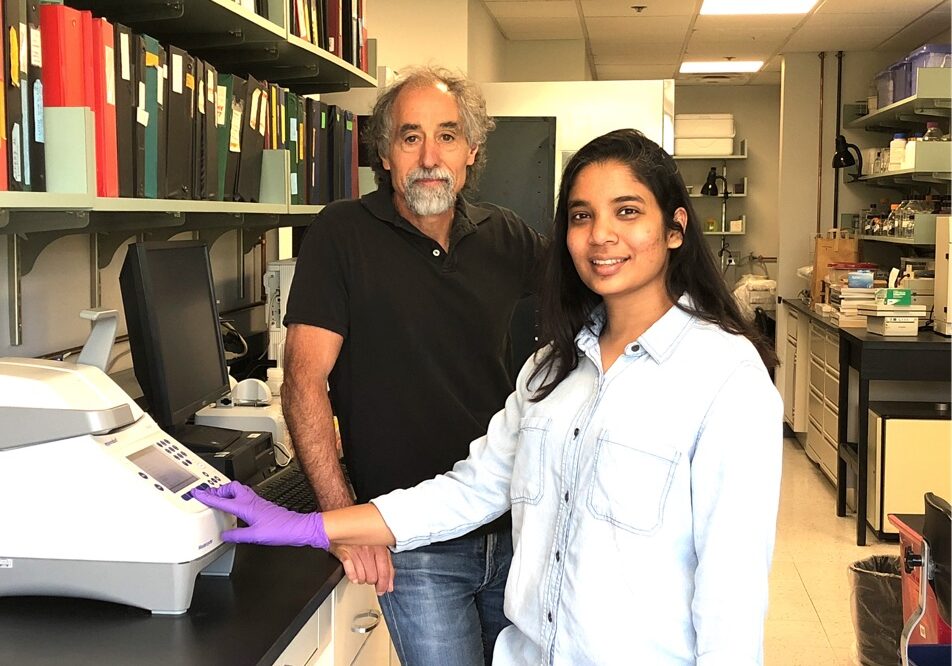Alternative Splicing in White Blood Cells: A Biomarker for Fragile X Syndrome

Joel Richter, PhD
Principal Investigator
Sneha Shah, PhD
Postdoctoral Fellow
University of Massachusetts Medical School
Worcester, MA
2021-2023 Grant Funding: $162,800
Elizabeth Berry-Kravis, MD, PhD
Co-Principal Investigator
Rush University Medical Center
Chicago, IL
2021-2023 Grant Funding: $24,000
With support from the Pierce Family Fragile X Foundation
Summary
Fragile X syndrome affects different people in very different ways, and we don’t know why. We need biomarkers (objective measures connected to a person’s biology) to measure whether a treatment is helping.
This team has discovered 1600 significant biomarkers for Fragile X syndrome which can be measured with a blood test. With 1600 data points, which vary from one person with Fragile X to the next, we could understand why some people are affected more than others and – better yet – determine how to optimize treatment for each individual.
The Results
Drs. Joel Richter and Sneha Shah at UMass Chan Medical School and Dr. Elizabeth Berry-Kravis at Rush University Medical Center have made a breakthrough discovery which points to using an antisense oligonucleotide (ASO) to treat Fragile X syndrome. They published their findings, "Antisense oligonucleotide rescue of CGG expansion–dependent FMR1 mis-splicing in fragile X syndrome restores FMRP" in the Proceedings of the National Academy of Sciences and Dr. Michael Tranfaglia explains the implications of their findings in a recent research update Innovative Breakthrough in Fragile X Treatment: The Promise of Antisense Oligonucleotide (ASO) Therapy
The Science
By Joel Richter, PhD
A long-sought goal in Fragile X syndrome (FXS) research is the development of stable, robust, easily accessible, and quantifiable biomarkers for the disorder. Reliable biomarkers for FXS would address a number of issues that have hampered successful outcomes of some therapeutic trials. For example, several drugs used to treat FXS have been based on results from animal models, particularly one or two in-bred strains of mice. Although such therapeutics often strongly mitigate FXS-like pathophysiologies in mice, similar achievements have been noticeably less frequent in diverse human populations. These observations indicate that human-based biomarkers would more reliably predict outcomes of clinical trials. Human-based biomarkers could help stratify patient populations so that therapies could be targeted to certain individuals that would be most likely to respond in a positive way. Additionally, biomarkers that can be frequently tested and monitored are very helpful in determining drug response more effectively.
Our collaboration has sought to identify multiple strong Fragile X syndrome biomarkers in human white blood cells (WBCs) using a blood test. We find that FXS individuals (ages 12-38 years) display about 1600 statistically significant changes in RNA levels and alternative pre-mRNA processing (splicing) events. One of our goals is to determine whether similar RNA alterations are also detected in FXS children. Another goal is to assess whether WBC RNA levels and/or splicing can be predictive of cognitive ability. WBC RNA from FXS patients that have been stratified based on IQ scores will be deep sequenced and analyzed for differential expression and splicing. If we are able to successfully co-stratify IQ with RNA mis-regulation in WBCs, we will explore several new avenues of investigation. For example, we will ascertain whether drugs used to treat FXS patients alter the WBC RNA population and correlate with success of the drug and whether a specific RNA signature might be predictive of a drug therapy outcome.

